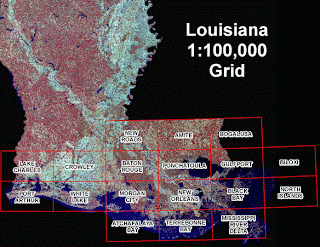A Vagabond's Maps
Tuesday, April 3, 2012
Isoline Map
Thematic Map
http://www.lib.utexas.edu/maps/europe/belgium_resources_1968.jpg
Thematic map is a very general term used to describe a map that deals with the subject of a specific theme- that is, it portrays data, visually, for a specific region, that has to do with the whatever theme the cartographer wishes to portray. The themes are endless, ranging from social, to cultural, to political, to economical, etc. This particular thematic map portrays the basic resources and processing for the country of Belgium in the year of 1968. The resource shown in blue is coal, and the processing of iron and steel share a symbol, nonferrous metals share a triangular symbol, and petroleum has its own intricate symbol. This map is great for showing an overly simplified view of where the major resources or processing may take place in the country, and reminds me of the old empirical Roman military maps, both in simplicity as well as pictogram representation of the elements.
Thematic map is a very general term used to describe a map that deals with the subject of a specific theme- that is, it portrays data, visually, for a specific region, that has to do with the whatever theme the cartographer wishes to portray. The themes are endless, ranging from social, to cultural, to political, to economical, etc. This particular thematic map portrays the basic resources and processing for the country of Belgium in the year of 1968. The resource shown in blue is coal, and the processing of iron and steel share a symbol, nonferrous metals share a triangular symbol, and petroleum has its own intricate symbol. This map is great for showing an overly simplified view of where the major resources or processing may take place in the country, and reminds me of the old empirical Roman military maps, both in simplicity as well as pictogram representation of the elements.
Population Density: Choropleth Map
http://www.mapofusa.net/us-population-density-map.htm
A Choropleth map is a thematic map that measures whatever the specified unit is throughout a specified region. Choropleths come in various shapes and sizes, and depict various types of information, including statistical information such as per capita income and population density. The above map is considered a choropleth population density map, and allows for the visualization of the data that is collected from the US Census regarding the most populous regions in the U.S. through the use of various shades of red; the more saturated the red, the more saturated the area is with people.
A Choropleth map is a thematic map that measures whatever the specified unit is throughout a specified region. Choropleths come in various shapes and sizes, and depict various types of information, including statistical information such as per capita income and population density. The above map is considered a choropleth population density map, and allows for the visualization of the data that is collected from the US Census regarding the most populous regions in the U.S. through the use of various shades of red; the more saturated the red, the more saturated the area is with people.
DOQQ Map
http://www.lacoast.gov/maps/2005doqq/
A DOQQ Map stands for a Digital Orthophoto Quarter Quad map and are usually produced by the USGS from digital aerial photos. These maps are especially important in that they remove the distortion of areal photos and provide a clean and neat flat map that accurately measures variables such as distance and area. This particular map shown here is of the 2005 Louisiana Cost, taken aerially, after the Hurricanes Rita and Katrina hit the coast. Maps such as these are useful in depicting the areas most influenced by the Hurricanes, and where efforts should be concentrated in order to continue seeing results.
Similarity Matrix
http://www.biomedcentral.com/1471-2164/8/353/figure/F5A Similarity Matrix is a list of scores or numeric data that correlate the similarities between two data points or sets. Typical matrices of similarities are graded upon level of similarity, which higher scores meaning more similarity, and lower scores depicting more dissimilarity. Above is an example of a similarity matrix, which is used predominantly in the biological world, and this one is no exception. This matrix highlights any similarities between two contrasting signatures based upon a binary coding.
Mapping the Southwestern U.S. using Digital Line Graph
http://geochange.er.usgs.gov/sw/resources/sw_basemap/
A Digital Line Graph is another type of map derived from a USGS map, and can be comprised of up to nine different categories of features. This particular map of the Southwest United States depicts the major cities, roads, railroads, hydrography, boundary, and federal lands.
A Digital Line Graph is another type of map derived from a USGS map, and can be comprised of up to nine different categories of features. This particular map of the Southwest United States depicts the major cities, roads, railroads, hydrography, boundary, and federal lands.
Population Density Map: US 2000
http://www.uni.edu/gai/India/India_Lesson_Plans/India_Population_Pyramids.htm
Population pyramids are useful tools in displaying geographic information in terms of age and sex distributions throughout specific regions of the world. These tools are specifically imperative to sociologists in mapping trends specific to fertility rates, mortality rates, population sustainability, etc. This example of three population pyramids shows the various forms a pyramid has, and what those shapes mean. For instance, Kenya's pyramid shows high fertility rates and mortality rates, thus rapid growth among the population, while the U.S. has fairly stable grow (our fertility and mortality rates are just at the sustainable level) and Germany has negative growth, that is, there are lower mortality rates and lower fertility rates showing the aging of their population is outshining their growth.
Subscribe to:
Comments (Atom)






